Standing on the Shoulders of Giants: 1910-1959 (Mar 2017)
In Ireland, prior to the 1900s, advanced training opportunities in mathematics and related fields were limited. While William Hamilton (1805-1865) and George Salmon (1819-1904) had distinguished careers in academia in the land of their birth and education, other notable Irish people with maths talent, such as Robert Adrain (1775-1843) and George Stokes (1819-1903), spent their working life overseas. Of course, many younger mathematicians apprenticed under the likes of Hamilton and Salmon, at Trinity College Dublin, and to a lesser extent (under others) at the Queen's Colleges in Belfast, Galway and Dublin, as well as at the Catholic University of Ireland in Dublin.

Hamilton, Salmon, Adrain, Stokes
The whole concept of postgraduate study was slowly changing, arguably driven by French and German models. Studying with a master for several years, leading to a significant new result written up as a thesis, slowly became the new expectation for research mathematicians. For instance, Father John Donaghey from Kilmovee, Mayo, earned his PhD in 1907 in Munich with Wilhelm Röntgen, before undertaking a career teaching at St Eunan's College (Raphoe), Maynooth, the University of Munich, and (in the USA) at Marquette University and Incarnate Word College.
Starting just over a century ago, in part spurred by the National University of Ireland's Travelling Studentship scheme, Irish graduates of mathematics and mathematical physics started to travel to Britain or further afield in greater numbers to pursue postgraduate study. Some of them did research directed by very well known and influential people, and on occasion these mentors had Irish connections.
These stays in Cambridge, London, Paris, Edinburgh, Princeton, and elsewhere generally lead to advanced degrees, in most cases a doctorate. While not all of the newly minted mathematicians returned to Ireland, many of them stayed in academia, and of those, several played major roles in starting up or advancing research programmes wherever they ended up, and often supervising PhD students of their own.
In the period up to 1960, Irish postgraduates trained overseas with talents as diverse as Picard, Bateman, Levi-Civita, Baker, Whittaker (who had worked at TCD), Hardy & Littlewood, Hodge, Born, Smithies, Artin, Wright, Hayman, Higman, Besicovitch, and Feller, as well as an impressive array of top notch (and sometimes Nobel prize winning) physicists. Needless to say, in this period there are also some examples of doctorates earned in Ireland for research done under the guidance of distinguished advisors (some of whom, e.g., JL Synge, were themselves Irish).
Below we survey numerous notable cases which correspond to postgraduate work completed between 1910 and 1959 (actually, as it happens, between 1913 and 1957). The focus is on pure maths and theoretical physics; obviously other people in this era pursued postgraduate work in applied and engineering maths.
Starting in 1960, the numbers of people in this category skyrockets: see 1960s and 1970s. Later decades will be surveyed in future blogs here.
(Last updated 17 Jan 2022.)
 |
1. Paddy Browne (aka Pádraig de Brún, 1889-1960) was born in Grangemockler, Tipperary, and was educated at UCD and at the Sorbonne (1910-1913), culminating in a PhD ("Sur un probleÌme d'inversion poseì par Abel, et sur ses geìneìralisations") under Émile Picard. He spent three decades at St Patrick's College, Maynooth, before becoming president of UCG. A priest and a classics and Irish scholar, as well as a mathematician, he wrote the famous poem "Thánaig Long ó Valparaiso". |

|
 |
2. Frank Murnaghan (1873-1976) was born in Omagh, Tyrone. He was educated at UCD and then (1914-1916) at Johns Hopkins, culminating in a PhD (on "The Lines of Electric Force Due to a Moving Electron") under Harry Bateman. He later spent 30 years on the staff at Johns Hopkins and wrote 16 books on various topics in mathematics and mathematical physics. |

|
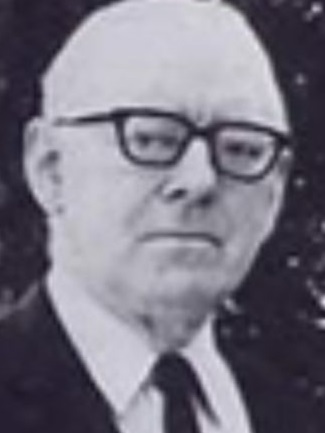 |
3. Statistician R. C. (Roy) Geary (1896-1983) was born 11 April in Dublin. After attending UCD (BSc 1916, MSc 1917) he was awarded an NUI Travelling Studentship, and studied at the Sorbonne (1919-1921). He had a long career in the Department of Industry and Commerce (1923-1949), before leading two newly formed government entities: the Central Statistics Office (1949-1956) and the Economic and Social Research Institute (1960-1966). He was attached the United Nations Stats Office from 1957 to 1960. He has 3 books to his credit. NUI awarded him a DEcon in 1962, and he also received honorary degrees from QUB (1968) and TCD (1973). His name lives on in the Stone–Geary utility function, the Geary–Khamis dollar, and elsewhere.
Wikipedia / MacTutor / DIB / RDS / IMS / SSISI / Geary's C / Utility Function / Podcast / 1901 Census / 1911 Census |
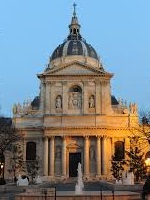
|
 |
4. Albert J. McConnell (1903-1993) was born 19 November in Ballymena, Antrim, and was educated at TCD (BA 1926) and at La Sapienza University in Rome. His Laurea (on "Stability inside a gravitational field") was done under Tullio Levi-Civita in 1928. He spent his entire career at TCD, from 1930 to 1957 as University Prof of Natural Philosophy. He also served as provost and wrote two books, one on Riemannian geometry and tensor calculus. Wikipedia / TCD / Ulster bio |

|
 |
5. Jack Semple (1904-1985) was born 10 June in Belfast, and was educated at QUB (BA 1925) and at Cambridge (1925-1927), culminating in a PhD ("Surfaces Of Intersection Of Cubic Primals. 2.Cubic Cremona Transformations Of 4-D Space") with Henry Baker in 1930. He lectured at QUB (1930-1936) and at King's College, London (1936-1969), and co-authored 3 books on algebraic geometry. |
 |
 |
6. Physicist Ernest Walton (1903-1995) was born 6 October in Dungarvan, Waterford, and grew up mostly in Limerick, Down, Tyrone and Belfast. He was educated first at TCD (BA 1926, MSc 1927 by thesis under JL Synge). At Cambridge, he engaged in research which culminated in a PhD under Ernest Rutherford in 1931. His "splitting the atom" with John Cockroft lead to the two men later sharing a Nobel prize. He lectured at TCD for 4 decades, from 1946–1974 as Erasmus Smith's Prof of Natural & Experimental Philosophy. 1911 Census / Nobel / Wikipedia / TCD |

|
 |
7. James R. (Dick) Timoney (1909-1985) born in Belleek, Fermanagh. He was educated at UCD, and studied with E. T. Whittaker (who had once been on the staff at TCD) at the University of Edinburgh (1930-1932), before serving 47 years on the staff at UCD. |

|
 |
8. Philip Gormley (1910-1973) was born in Claudy, Londonderry, and was educated at UCD and at the University of Edinburgh, culminating in a PhD (on "A correspondence between null and ordinary geodesics, its properties, and Straneo’s unified theory") with Edmund Whittaker in 1933. He taught at UCD for 40 years, and was a keen translator of Russian mathematics. |

|
|
|
9. Jack Todd (1911-2007) was born in Carnacally, Down, and studied at QUB and at Cambridge, where he studied (1931-1933) with Hardy & Littlewood. He worked at QUB and King's College, London, and later at the National Bureau of Standards and Caltech in the USA. He was an early proponent of using computers to do numerical mathematics. His efforts in the late 1940s helped to ensure the preservation of the Oberwolfach Mathematical Research Institute in Germany. |
|
|
|
10. Statistician Donal McCarthy (1908-1980) was born 4 June in Midleton, Cork, and was educated at UCC (BA 1928, MSc 1934, PhD 1938+). His thesis was a result of study (1936-1937) at King's College London. He lectured at UCC (1931-1949), often in Irish, and introduced post graduate level statistics courses there starting in 1939. He was chair of maths physics from 1944 on, and then joined the CSO (1949-1966), first serving as deputy director, then from 1957 on as director. After a year heading up the ESRI, he was appointed president of UCC (1967-1978). He received honorary degrees from NUI (1967) and TCD (1971). |
 |
|
|
11. Sam Lilley (1914-1987) was born 25 June in Belfast and was educated at first at QUB (BSc 1935, MSc 1936 by thesis under Jack Semple). In 1938 he completed his PhD on "1. The Isolated Double Points Of An Algebraic Surface. 2. The Isolated United Points Of A Cyclic Involution Of Prime Order On An Algebraic Surface" under William Hodge at Cambridge. After working in ballistics during WWII he switched to history of science and journalism, teaching at Cambridge, Birmingham and Nottingham, often adult education classes. His books include Discovering Relativity For Yourself. |
|
|
|
12. Theoretical physicist Barry Spain (1914-2007) was born in Londonderry. He was educated at TCD and at the University of Edinburgh, where in 1939 he got his PhD (on "A nuclear statistical model with applications to stability") under Klaus Fuchs, a man who later passed nuclear secrets to Moscow. His career was spend at Imperial College, TCD, and Sir John Cass College. He wrote five books. His son Philip is also a mathematician. |
|
 |
13. Mathematical physicist David Bates (1916-1994) was born in Omagh, Tyrone. He was educated at QUB and University College London, and later taught at both institutions. His doctoral studies with Harrie Massey at UCL were interrupted by WWII, and never formally completed, but the two worked together extensively. Bates worked in atmospheric and molecular physics, and was a founding member of the Alliance Party of Northern Ireland. |  |
 |
14. Theoretical physicist Jim McConnell (1915-1999) was born in Dublin, and was educated at UCD and in Rome, where he was ordained as a priest and also earned his Laurea ("The Lorenz formula - The Lorenz for the refraction index") from La Sapienza University (in 1941). His career started at the newly founded Dublin Institute of Advanced Studies, but was mostly spent at St Patrick's College, Maynooth, where he also served as registrar. |

|
 |
15. Mathematical physicist Sheila Tinney (née Power, 1918-2010) was born 15 January in Galway, where her father Michael was professor of maths. She was educated at first at UCD (BSc 1938, MSc 1939), where she was awarded an NUI Travelling Studentship Prize. Her 1941 PhD from the University of Edinburgh on "The Stability of Crystal Lattices" was done with Max Born, making her the first Irish university educated woman to get a doctorate in mathematical science. Her career was spent at DIAS (1941-1949), where she was one of the first scholars in residence, and at UCD (1941-1978). At UCD she introduced generations of students to quantum physics, and briefly served as acting dept head of maths physics. |

|
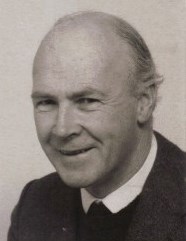 |
16. Theoretical physicist Jim Hamilton (1918-2000) was born in Sligo town, and brought up in Belfast. He was educated at QUB and Manchester, earning his 1948 PhD ("Quantum Theory of Radiation Damping") with Patrick Blackett. His career included notable stints at DIAS, Cambridge, University College London, and Nordita in Copenhagen. At DIAS, he helped develop the theory of of cosmic-ray mesons, and his later work included S-matrix theory research. |
|
|
|
17. Richard Ingram (1916-1967) was born in Belfast, and was educated at UCD at and Johns Hopkins, earning his 1948 PhD (on "Characters of the Symmetric Group") with fellow Irishman Frank Murnaghan. A priest, his interests included geophysics and algebra. In addition to teaching maths at UCD for two decades, he spent many years running the seismological observatory at Rathfarnam Castle. A founding member of the IMTA, he also co-edited Volume 3 of the complete papers of W. R. Hamilton. |
|
 |
18. Derek Burgess (1924-2004 ) was born in Tyrone and educated at QUB, and at Cambridge, leading to a 1950 PhD ("Abstract Lebesgue-Stieltjes Integrals, Laplace-Stieltjes Transforms and Moment Problems, with Applications") with Frank Smithies. After a few years in Paris and at Magee in Londonderry, he returned to QUB where he served for four decades. He supervised several PhD theses in topology, and authored the 1966 textbook Analytical Topology. |

|
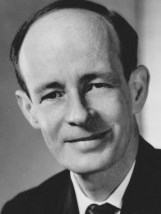 |
19. A. Murray MacBeath (1923-2014) was born in Scotland and brought up in Belfast. He was educated at QUB and worked at Bletchley before continuing his studies, first at Cambridge, and then at Princeton, where he got his PhD (on "The Geometry of Non-Homogeneous Lattices") in 1950 under Emil Artin. His career was mostly spent at Dundee, Birmingham and the University of Pittsburgh. |
 |
 |
20. Arthur Allen (1928-2010) was born 5 May in Belfast, and was educated at first at QUB (BA 1948). Following a fellowship at Peterhouse in Cambridge, he got a 1952 PhD from Princeton ("Some Theorems on Harmonic Functions and Related Topics") under Solomon Bochner. After another year at Cambridge, he settled at TCD (MA 1959). In the mid 1960s he taught at Imperial College, and later spent 2 decades at Sheffield Polytech. |
 |
 |
21. Barbara Yates (1919-1998) was born to a Dublin family who soon moved to Belfast. Like her father and two brothers before her, she got a maths degree from TCD. Her 1952+ PhD from Aberdeen ("A difference-differential equation") done with Edward Wright, made her the first Irish woman and Irish graduate to receive a doctorate in pure maths. Her long academic career was mostly spent at Royal Holloway. |

|
 |
22. Informatics and computing pioneer Gordon Foster (1921-2010) was born in Belfast, and was educated at QUB, and at Oxford, where he got his PhD (on "Some Problems in the Mathematical Theory of Probability") in 1953 under David Kendall. His career included stints at Bletchley Park, the University of Manchester (alongside Alan Turing), the London School of Economics, and many years at TCD. He devised a 9-digit code upon which the International Standard Book Number (ISBN) is based, and later worked to connect remote areas of the world to the internet. |
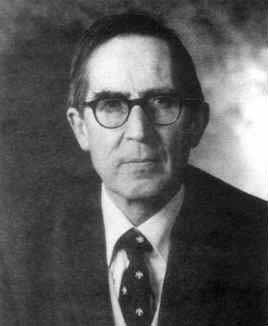
|
 |
23. Mathematician, geophysicist and social activist Gerry Gardner (1926-2009) was born in Tullamore, Offaly. He was educated at TCD, Carnegie Mellon and Princeton University. His 1953 PhD was on "The concept of a rigid body in special relativity". He worked in the USA in the oil and natural gas industries, returning to academia in later life. A statistical analysis of his was used in a US Supreme Court decision. |
 |
 |
24. Paddy Kennedy (1929-1966) was born in Claremorris, Clare, and was educated at UCC and the University of Exeter. At the latter he earned his 1954 PhD ("The Minimum Modulus of Integral Functions of Small Order") with Walter Hayman, but it was awarded by NUI. After a decade teaching at UCC during which he published extensively in analysis, he became the first professor of mathematics at the new University of York. Sadly, he died a few years later. |
 |
 |
25. Sean Tobin (1930-2023) was born in Moneygall, Tipperary, and was educated at UCG, and then at Manchester, culminating in a 1954 PhD ("On Groups of Exponent Four") with Graham Higman. He spent 40 years at UCG, spearheading an algebra and group theory focus there. He is perhaps best known for his early work on the Burnside Problem. |

|
 |
26. Maurice Kennedy (1924-1994) was born in Dublin, and was educated at UCD and at Caltech, where he got his PhD ("Ergodic Theory for a Certain Class of Markov Processes") in 1954 with Samuel Karlin. His career was spent at UCD, where he also served as registrar. His research interests included analysis, functional analysis, and point set topology. |

|
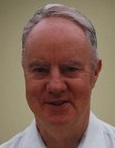 |
27. A. Cormac Smith (1926-2009) was born 29 April in Glasgow and grew up there and in Portstewart, Londonderry. He was educated entirely at UCD (BSc 1947, MSc 1948, PhD 1954). His thesis on "Generalized Quaternion Algebra of Hamilton" was the first maths doctorate awarded there. It was for research originally suggested by Phil Gormley (with input from Jean Dieudonné at Nancy), done while he was teaching at Sandyhurst College (1950-1954), after a stint at Johns Hopkins (1948-1950). This was followed by spells at Computing Devices and Univ Ottawa (at least 1957-1959), and the College of Aeronautics in Cranfield. He then returned to Canada where he was on the staff at Windsor (1963-1991), supervising at least 3 PhD students there. |
|
 |
28. S. James Taylor (1931-2020) was born 13 February in Carrickfergus, Antrim, and grew up there and in Nigeria. He was educated at QUB and at Cambridge, culminating in a 1954 PhD ("On the Theory of Hausdorff Measures") with A. S. Besicovitch. His career was spent at Birmingham, Westfield College, Liverpool, and the University of Virginia. His expertise includes Brownian motion, "small sets" and fractals. He had three books to his name, as well as seven joint publications with Erdős. His son Charles is also a mathematician. |

|
 |
29. Brian Murdoch (1930-2020) was born 3 April in Warwickshire, England, and grew up Dublin. He was educated at TCD (Scholar 1948, BA 1951), and at Princeton, where in 1955 he earned a PhD on "Preharmonic functions" under probabilist William Feller. From 1957 on, his career was back at TCD, where he took MA (1965) and was Erasmus Smith's Prof of Maths (1966–1989). His principal interests were in random walks, stochastic processes and probability. |

|
 |
30. Mathematical physicist John Stewart Bell (1928-1990) was born in Belfast. He was educated at QUB and the University of Birmingham, where in 1956 he got a PhD under Rudolf Peierls. He spent much of his career at CERN, and is known for a 'no-go theorem' named after him.
|

|
 |
31. Theoretical physicist Ron McCarroll was born in Ballymena, Antrim, and was educated at QUB, where in 1957 he got his PhD under Alex Dalgarno. His career has been spent at QUB, CNRS, Bordeaux University, and Pierre & Marie Curie University. |

|
 |
32. Vincent Hart was born in Hull, and brought up in Cork. He was educated at UCC and at DIAS, earning a PhD on "The Method of the Hypercircle in the Solution of the Biharmonic Equation" in 1957 with John L. Synge. His career started at UCC and DIAS, followed by three decades at the University of Queensland. |  |










